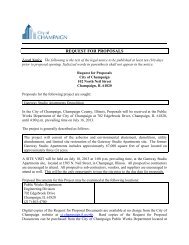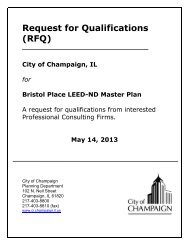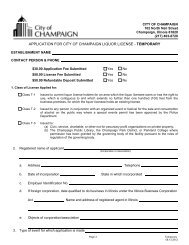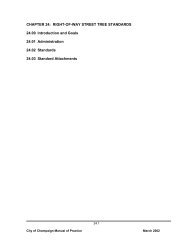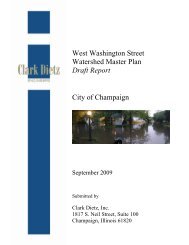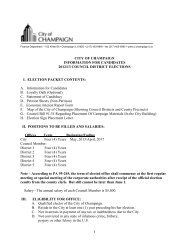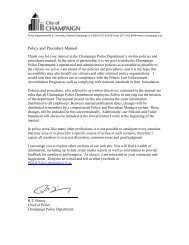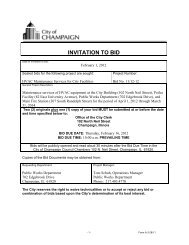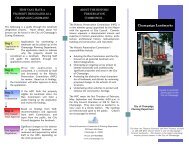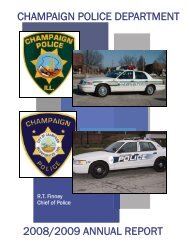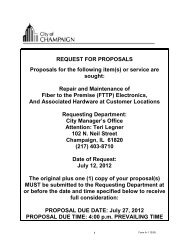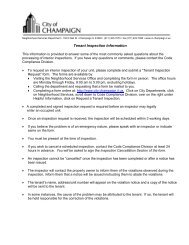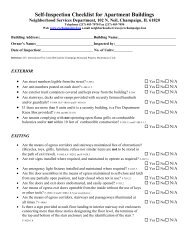2010-2014 Consolidated Plan - City of Champaign
2010-2014 Consolidated Plan - City of Champaign
2010-2014 Consolidated Plan - City of Champaign
You also want an ePaper? Increase the reach of your titles
YUMPU automatically turns print PDFs into web optimized ePapers that Google loves.
friction surfaces, or impact services that would result in adverse human health effects as established bythe appropriate Federal agency.LIHTC: (Federal) Low Income Housing Tax Credit.Low-Income: Families or households whose incomes do not exceed 80 percent <strong>of</strong> the median incomefor the area with adjustments for family size as determined by HUD for the CDBG program.McKinney Homeless Assistance Program: This federal program is administered by the U.S.Department <strong>of</strong> Housing and Urban Development and consists <strong>of</strong> several component parts, includingsupportive housing for persons with disabilities, transitional housing, SRO Moderate Rehabilitation,Supplemental Assistance for Facilities to Assist the Homeless (SAFAH), and special housing services forpeople with AIDS.Mental Illness, Severe: A serious and persistent mental or emotional impairment that significantlylimits a person’s ability to live independently.Middle Income: Generally, families or households whose income is between 80 percent and 95 percent<strong>of</strong> the median income for the area, as determined by HUD. (A HUD – CDBG determined definitionalcategory).Moderate Income: Generally, families or households with income that does not exceed 80% <strong>of</strong> median,as determined by HUD for the CDBG program.NAMI: National Alliance for the Mentally Ill. Founded in 1979 as the National Alliance for the MentallyIll, NAMI works to achieve equitable services and treatment for more than 15 million Americans livingwith severe mental illnesses and their families.Neighborhood Revitalization Strategy: A comprehensive approach to address economicdevelopment needs in particular neighborhoods. These strategies tie 5 year outcome based (quantifiable)benchmarks to CDBG funding decisions and <strong>of</strong>fer public agencies and CBDOs enhanced flexibility inundertaking activities with CDBG funds in these neighborhoods.New Construction: The construction <strong>of</strong> housing on a vacant site or a site previously used for nonhousingpurposes, or the addition <strong>of</strong> housing units to a property, but does not include the rehabilitationor replacement <strong>of</strong> housing units on a site, whether vacant or occupied, without a material increase in thefloor area used for housing.Non-Elderly Household: A household that does not meet the definition <strong>of</strong> "Elderly Household," asdefined above.Non-Homeless Persons with Special Needs: Includes frail elderly persons, persons with AIDS,disabled families, and families participating in organized programs to achieve economic self-sufficiency.Overcrowded: A housing unit is overcrowded if it contains more than one person per room. (U.S.Census definition)Owner: A household that owns the housing unit it occupies. (U.S. Census definition)Appendix E 179



